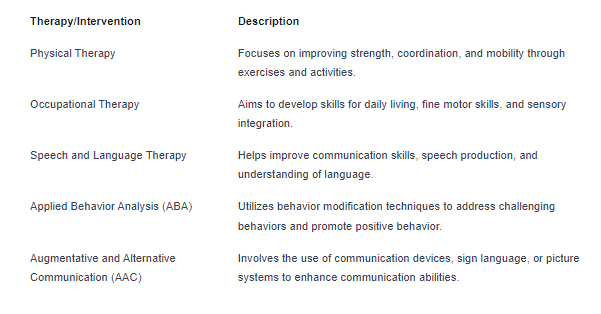What is Angelman Syndrome
Unraveling the mystery of Angelman Syndrome: Causes, symptoms, and management. Discover the facts behind this rare genetic disorder.

Understanding Angelman Syndrome
Angelman Syndrome is a rare neurogenetic disorder that primarily affects the nervous system. It is characterized by a distinct set of symptoms, including developmental delays, intellectual disability, speech difficulties, and unique behavioral characteristics. Let's explore what Angelman Syndrome is and its causes and prevalence.

What is Angelman Syndrome?
Angelman Syndrome is a genetic disorder that occurs due to a loss or abnormality of the UBE3A gene. This gene is responsible for producing a protein called ubiquitin protein ligase E3A, which plays a crucial role in the normal functioning of the brain.
The symptoms of Angelman Syndrome typically become apparent during infancy or early childhood. Infants with Angelman Syndrome may have feeding difficulties and exhibit delayed development milestones. As they grow older, individuals with Angelman Syndrome often experience severe intellectual disability, speech impairments, and a unique happy demeanor characterized by frequent laughter and smiling.
Causes and Prevalence of Angelman Syndrome
Angelman Syndrome is primarily caused by a genetic mutation or deletion of the UBE3A gene. In most cases, the mutation or deletion occurs spontaneously and is not inherited from parents. However, in a small percentage of cases, Angelman Syndrome can be inherited from a parent who carries a mutated UBE3A gene.
The prevalence of Angelman Syndrome is estimated to be around 1 in 12,000 to 20,000 births. It affects both males and females equally, irrespective of ethnic or racial backgrounds.
Understanding the causes and prevalence of Angelman Syndrome is crucial for early diagnosis and management of the condition. Genetic testing and evaluation are essential to confirm the diagnosis and develop appropriate treatment plans for individuals with Angelman Syndrome.
Signs and Symptoms
Angelman Syndrome is a complex neurological disorder that manifests with a range of signs and symptoms. Understanding these manifestations is crucial for recognizing and diagnosing the condition. The following are key signs and symptoms commonly associated with Angelman Syndrome:
Developmental Delays and Intellectual Disability
Children with Angelman Syndrome typically experience developmental delays, which are noticeable during infancy. These delays are often characterized by a delay in reaching developmental milestones such as sitting, crawling, and walking. As they grow older, individuals with Angelman Syndrome may also exhibit intellectual disability, with varying degrees of severity.
Communication and Speech Difficulties
Communication challenges are a hallmark feature of Angelman Syndrome. Individuals with this condition typically have limited or absent speech. They may rely on nonverbal forms of communication, such as gestures, facial expressions, and body language, to express their needs and emotions. Augmentative and alternative communication (AAC) methods, such as sign language or communication devices, can be beneficial in facilitating communication for individuals with Angelman Syndrome.
Movement and Balance Issues
Motor impairments are common in Angelman Syndrome and can affect both gross and fine motor skills. Individuals with Angelman Syndrome may experience difficulties with coordination, balance, and fine motor tasks such as writing or buttoning clothes. These challenges can impact their ability to perform daily activities independently.
Unique Behavioral Characteristics
Individuals with Angelman Syndrome often exhibit unique behavioral characteristics that are distinct to the condition. These may include a happy and excitable demeanor, frequent laughter, and an affinity for social interaction. They may also display hyperactivity, impulsivity, and a short attention span. Sleep disturbances, such as frequent awakenings during the night, are also commonly observed in individuals with Angelman Syndrome.
To better understand the prevalence of these signs and symptoms, here is a table summarizing their occurrence in individuals with Angelman Syndrome:

Recognizing the signs and symptoms of Angelman Syndrome is crucial for early intervention and appropriate management. If you suspect that you or someone you know may have Angelman Syndrome, it is important to consult with a healthcare professional for a comprehensive evaluation and diagnosis.
Diagnosing Angelman Syndrome
When it comes to diagnosing Angelman syndrome, a comprehensive evaluation is essential. Healthcare professionals rely on various methods to accurately diagnose this genetic disorder. This section explores the three primary approaches used in diagnosing Angelman syndrome: medical evaluation and history, genetic testing, and differential diagnosis.
Medical Evaluation and History
The initial step in diagnosing Angelman syndrome involves a thorough medical evaluation and history. Healthcare professionals will conduct a comprehensive physical examination and gather information about the individual's developmental milestones, behavior, and any noticeable symptoms. They will also evaluate the family medical history to identify any potential genetic patterns.
During this process, it is crucial for caregivers or family members to provide detailed information about the individual's developmental milestones, including any delays or regressions. This information helps healthcare professionals assess the presence of characteristic features associated with Angelman syndrome.
Genetic Testing
Genetic testing plays a pivotal role in confirming a diagnosis of Angelman syndrome. The most commonly used genetic test is a DNA methylation analysis, which examines the specific region on chromosome 15 associated with Angelman syndrome. This test helps identify abnormalities, such as deletions or mutations, in the UBE3A gene, which is responsible for the disorder.
In some cases, if the DNA methylation analysis is inconclusive, additional genetic tests may be performed. These tests may include fluorescence in situ hybridization (FISH), chromosomal microarray analysis (CMA), or DNA sequencing to further investigate any suspected genetic abnormalities.
Differential Diagnosis
Differential diagnosis is the process of distinguishing Angelman syndrome from other disorders that may have similar symptoms. It involves considering a range of conditions that share some common features with Angelman syndrome, such as developmental delays, intellectual disability, or movement disorders.
Some conditions that may be considered in the differential diagnosis of Angelman syndrome include:

It is important to differentiate Angelman syndrome from these conditions, as treatment and management approaches may vary. Genetic testing and a thorough evaluation by healthcare professionals specializing in genetic disorders can aid in accurate differential diagnosis.
By utilizing medical evaluation, genetic testing, and differential diagnosis, healthcare professionals can effectively diagnose Angelman syndrome. Early and accurate diagnosis is crucial for providing appropriate care, support, and intervention strategies to individuals with Angelman syndrome and their families.
Management and Support
When it comes to managing Angelman Syndrome, a comprehensive and multidisciplinary approach is essential. This involves a combination of therapies, interventions, education, and support services to address the unique needs of individuals with Angelman Syndrome.
Multidisciplinary Approach to Care
Managing Angelman Syndrome requires a team of healthcare professionals from various disciplines working together. This multidisciplinary approach ensures that all aspects of the individual's health and well-being are addressed. The team may include:
- Pediatricians or neurologists: They play a crucial role in diagnosing and monitoring the medical aspects of Angelman Syndrome.
- Physical therapists: They focus on improving motor skills, movement, and coordination.
- Occupational therapists: They help individuals develop essential daily living skills and enhance fine motor skills.
- Speech-language pathologists: They work on improving communication skills, speech, and language development.
- Behavioral therapists: They assist in managing challenging behaviors and developing strategies to promote appropriate behavior.
- Special education teachers: They provide tailored educational plans to support learning and development.
- Psychologists or counselors: They offer emotional support and guidance for individuals and their families.
Collaboration among these professionals ensures a holistic and individualized approach to care, addressing the diverse needs and challenges associated with Angelman Syndrome.
Therapies and Interventions
Therapies and interventions play a significant role in managing the symptoms of Angelman Syndrome. These interventions aim to improve communication skills, motor function, and overall quality of life. Some common therapies and interventions include:

These therapies and interventions are tailored to the specific needs and abilities of individuals with Angelman Syndrome, providing them with the tools and support necessary for their development and well-being.
Education and Support Services
Education is a vital component of managing Angelman Syndrome. Special education programs are designed to meet the unique learning needs of individuals with Angelman Syndrome. These programs often include individualized educational plans (IEPs) that outline specific goals and accommodations to support their academic progress.
In addition to education, support services are essential for individuals with Angelman Syndrome and their families. Support groups, both in-person and online, provide a platform for sharing experiences, gaining insights, and finding emotional support. These groups can be invaluable for families navigating the challenges associated with Angelman Syndrome.
Furthermore, organizations dedicated to Angelman Syndrome offer educational resources, advocacy, and access to the latest research and clinical trials. These resources can empower individuals and their families with knowledge and help them make informed decisions about their care.
By adopting a multidisciplinary approach to care, utilizing various therapies and interventions, and availing education and support services, individuals with Angelman Syndrome can lead fulfilling lives while managing the unique challenges associated with the condition.
Research and Future Outlook
Ongoing research and advancements in understanding Angelman Syndrome are paving the way for a better future for individuals affected by this condition. Scientists and medical professionals are continuously working towards unraveling the intricacies of Angelman Syndrome, aiming to improve diagnosis, treatment, and support for those living with the syndrome.
Advances in Understanding Angelman Syndrome
Over the years, significant progress has been made in understanding the underlying mechanisms and genetic basis of Angelman Syndrome. Researchers have identified that the majority of cases are due to a lack of functioning UBE3A gene, which plays a crucial role in normal brain development and function.
Advancements in genetic testing have made it easier to confirm a diagnosis of Angelman Syndrome, allowing for earlier intervention and support. The discovery of the genetic cause has also increased awareness and understanding of the syndrome among healthcare professionals, leading to improved care and management strategies.
Current Research and Clinical Trials
Ongoing research efforts are focused on various aspects of Angelman Syndrome, ranging from understanding the molecular and cellular mechanisms to developing potential therapeutic interventions. Clinical trials play a vital role in evaluating the safety and effectiveness of new treatments and interventions for individuals with Angelman Syndrome.
Researchers are exploring different avenues to address the core symptoms associated with Angelman Syndrome, such as developmental delays, intellectual disability, communication difficulties, and motor impairments. Some of the current areas of research include:
Research Area
Gene therapy
Pharmacological interventions
Communication and speech therapies
Behavioral interventions
Cognitive and educational interventions
Clinical trials are essential for evaluating the efficacy of these approaches and determining their impact on the overall quality of life for individuals with Angelman Syndrome. Participation in clinical trials provides an opportunity for individuals and families to contribute to the advancement of knowledge and potential future treatments.
Promising Areas of Study
The future outlook for Angelman Syndrome research holds much promise. Scientists are exploring various avenues that may lead to breakthroughs in understanding and managing the syndrome. Some of the promising areas of study include:
- Epigenetics: Investigating how modifications to gene expression can potentially reactivate the UBE3A gene, offering potential therapeutic targets.
- Biomarkers: Identifying specific markers or indicators that can aid in early diagnosis, monitoring disease progression, and assessing treatment responses.
- Non-invasive therapies: Exploring non-invasive techniques, such as transcranial magnetic stimulation (TMS) and deep brain stimulation (DBS), to potentially improve motor and cognitive functions.
- Individualized interventions: Developing personalized treatment plans that take into account the unique needs and challenges faced by individuals with Angelman Syndrome.
These areas of study hold promise for the future, offering hope for improved treatments and interventions that can enhance the lives of individuals with Angelman Syndrome and their families.
As research continues to advance and our understanding of Angelman Syndrome deepens, it is expected that new discoveries and interventions will emerge, ultimately leading to improved outcomes and better support for individuals with Angelman Syndrome.
Conclusion
Angelman Syndrome is a complex genetic disorder that affects individuals in a variety of ways. Early diagnosis and intervention are crucial to ensure individuals receive the appropriate care and support necessary for their development and well-being. A multidisciplinary approach to care, including various therapies, interventions, education, and support services, can help manage the symptoms associated with Angelman Syndrome.
Ongoing research efforts continue to advance our understanding of Angelman Syndrome and improve diagnosis, treatment, and support for those living with the condition. With promising areas of study emerging, such as epigenetics, biomarkers, non-invasive therapies, and individualized interventions, there is hope for improved outcomes in the future.
Individuals with Angelman Syndrome have unique challenges but can lead fulfilling lives when provided with the appropriate care and support. It is important to raise awareness about this condition among healthcare professionals and the general public to further promote early diagnosis and effective management strategies. By working together as a community, we can improve outcomes for individuals with Angelman Syndrome and their families.
Sources
https://medlineplus.gov/genetics/condition/angelman-syndrome/
https://www.angelman.org/what-is-as/
Similar articles
We’re here to help you

Our team is here to assist you in this process. Contact us for any assistance.
it’s easy to apply
We Accept Most Insurances
Our in-network insurance partnerships make ABA therapy more accessible to families throughout our service areas.







Our Insurance Process
We'll request your insurance details to help us verify your plan's coverage for ABA therapy. Once we've received this information, we'll walk you through your benefits, including copayments, deductibles and out-of-pocket maximums, so you know what to expect in advance.
Our team will then handle the preauthorization and all the necessary paperwork.
.svg)





















.jpeg)


































.jpeg)




.jpeg)







.jpeg)











.jpeg)
















